Please support Game Informer. Print magazine subscriptions are less than $2 per issue
XenoMiner Impressions: More Than Just Minecraft In Space
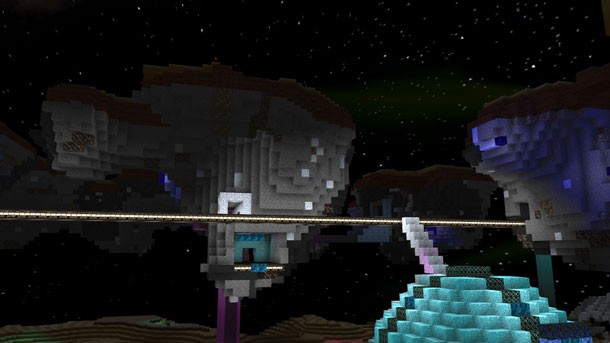
Dismissing XenoMiner as just another one of the countless Minecraft clones flooding the Xbox Live Indie Games market would be easy. But this engaging new voxel game from Gristmill Studios doesn't just rise above the sea of uninspired copycats; it differentiates itself from Mojang's indie hit with a sci-fi theme and some clever tweaks to the tried-and-true gameplay formula. Read our impressions to see what makes XenoMiner stand out, complete with developer quotes that hint at where the title is heading next.
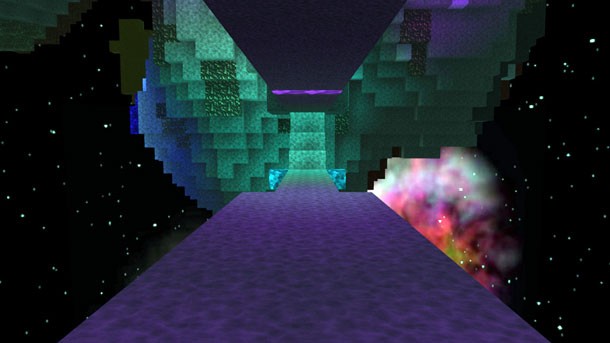
A Dangerous New World
When you start a new game in XenoMiner, you wake up in the
wreckage of a spacecraft on a moon called Xenos. Like in Minecraft, this world
is procedurally generated and completely unique to your game.
In order to survive on your new desolate planet, there are two gameplay mechanics you need to keep an eye on. The first is radiation; in a reversal of Minecraft, night is the only time it's safe to freely travel across the surface of Xenos. Once the sun comes up, the planet is bathed in deadly radiation. You can tolerate a fair amount of exposure (Gristmill is still tweaking how much) before succumbing to its effects, but in general you'll want to find shelter as soon as it starts getting light out.
The other mechanic you need to keep track of is your air supply. No matter what you're doing, you're always sucking down precious oxygen, and will need to refill your supply by breaking down and converting ice blocks. Luckily, strange tree-like ice structures litter the landscape, providing the necessary resources to stay alive.
Still, these mechanics create more of a tense survival tone than most voxel games, a feeling XenoMiner developer Jesse Nivens says the team plans to foster in future updates:
"We do want to add more survival aspects to the game, and right now our focus in that area is in adding aliens. We also want to improve the survival experience by allowing the player to build shelters that can evolve into something much bigger, and the first step in bringing that to the game is with sealed rooms with breathable oxygen and environmental protection."
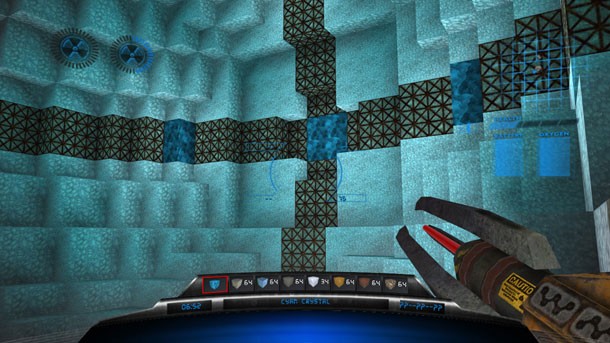
The Right Tools For
The Job
Unlike other voxel games, XenoMiner streamlines the mining
process by providing players with an all-purpose Particle Information
Conversion Kit (P.I.C.K.) extractor. Instead of switching between multiple
tools for different ores, your extractor allows you to mine and place any block
type (though some of the high-end ores require upgrading to a better
extractor), and has a greater range than Minecraft's tools.
Unlike Minecraft's tools, extractors don't degrade over time. Instead, they consume energy from your battery, which can be recharged with solar panels. This provides its own unique gameplay mechanic, as solar panels must be placed on the surface of the planet and have great vertical range (you can be any distance above or below them and still receive a charge) but poor horizontal range. You can boost your solar panel's signal by building relays; build and place enough relays as you expand your mining operation, and you'll never have to worry about your battery levels.
XenoMiner features a number of other unique tools, including upgradeable environmental suits and helmets, gravity boots that allow you to walk on any surface, and grav pads that send you hurtling upward when you step on them. Creating items requires building a centriforge and upgrading it with AI cores, which provides a deep and satisfying crafting tree.
Gristmill plans to add more crafting items to the game, and recently announced that the first content update will feature retractable doors, switches, and conduits. However, there's one more tool that vastly differentiates XenoMiner from other voxel games.
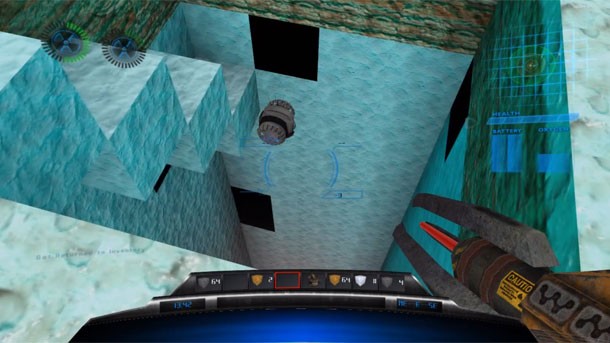
Meet Your New Best
Friend
When you start a new game, you'll find an abandoned alien
ship nearby your crash site. Inside of it is the most valuable item in
XenoMiner: a programmable bot.
Figuring out how to program the floating droid requires some guesswork, but once you understand the hieroglyphs, you can write your own complex macros and scripts. After that, you simply activate your little robot friend and let it go; the bot automatically transfers the ore it mines to your inventory, and you're free to go about your business.
After spending some time messing with the bot's programming, I managed to come up with separate scripts for digging stairs, building towers, and creating elaborate systems of branch mines – perfect for finding rare ores.
Having a programmable bot is like having a second miner at your disposal, and XenoMiner developer Rod Runnheim says the team has more ideas for them in the future:
"There is a whole family of technology to explore based on alien technology. The challenge is to make it accessible, and introduce it in a way that flows with the game. We have plans to introduce more bots, and not just mining bots. We have also been exploring an entirely new alien technology that is more advanced than the bots. Another of our devs has had marvelous luck with an early version of that."
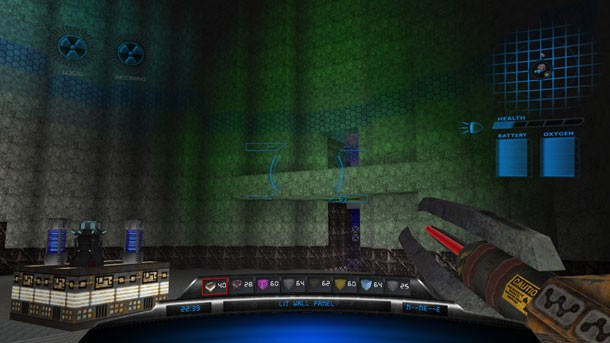
A Better Balance
As a gamer who has spent countless hours exploring worlds in
Minecraft, I enjoyed many of the ways XenoMiner differentiates itself. The
all-purpose extractor simplifies and speeds up the act of mining ore and
building structures, and the crafting tree already has a satisfying number of
items to build. I also love the sci-fi setting, though XenoMiner's higher
resolution textures don't mesh as well with the blocky nature of voxel games as
Minecraft's charmingly retro visuals.
Additionally, with no multiplayer or enemy mobs right now, XenoMiner feels as barren as you might expect an alien moon to be. Gristmill is working to change that, however, and its first patch released earlier this month should give players hope. It fixed a variety of problems players were complaining about, including the rarity of ores, lag problems, and a field of view many felt was too narrow. Listening to player feedback is an important goal for the team, says Jesse Nivens:
"We love including our players in the process of developing XenoMiner. From the day we published it we've been getting hit up from fans around the world wanting us to add different features. Several fan suggestions have been brought into the game, with more on the way."
If you're on the fence about giving XenoMiner a try, taking the plunge won't cost you much; XenoMiner is currently on sale for 80 MS Points, and Gristmill intends to continue updating the game for free. You can buy it now from the XBLIG marketplace, and get status updates from Gristmill's website.
Head on to the next page for the rest of our developer interview, which reveals more Gristmill's plans for XenoMiner's future.
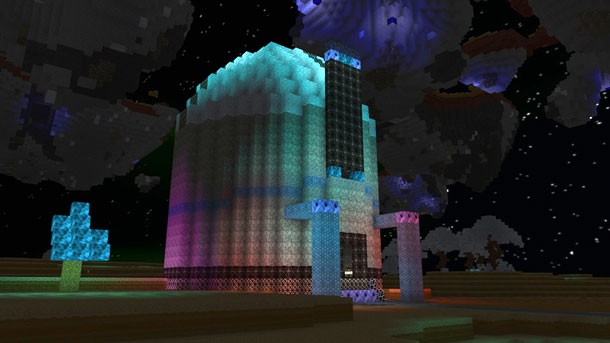
Tell our readers a bit about Gristmill Studios. How big is your
team? Is developing XenoMiner a full-time job?
Doug Graham: We started two years ago with three developers. Since
then we have grown to six developers and two art guys. It started when the
three of us were talking shop at work and realized we were all closet game
developers. Over time, other co-workers and friends saw the work we were doing
and wanted to get involved. We all dream about when we can make this our full-time job. Right now we all have day jobs, but we meet formally once a week in my
dining room and spend whatever free time we have on off-nights working on the
game.
How do updates work for XBLIGs? We've heard reports that patches
and updates for XBLA/retail games cost money to implement. Is this the case for
indie games as well? Does testing/updating XenoMiner cost your team money?
Doug: XBLIGs are a little more forgiving on updates. The only cost
we really have is a time requirement. After the peer review (pass or fail) you
have to wait seven full days before you can upload a new package to be
reviewed. This includes a patch update, so if you notice something the day
after it is released, you'll still need to wait six more days until you can
upload a fix.
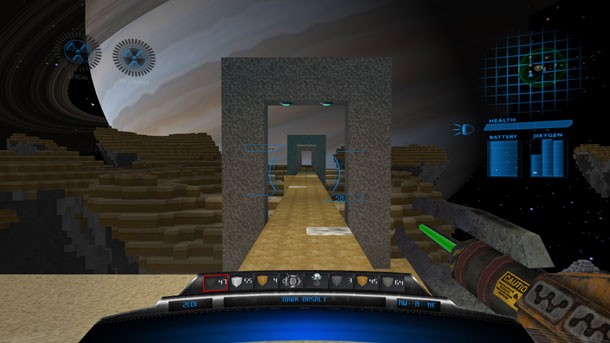
When you first start XenoMiner, you're introduced to DAI-SE, an AI
program that walks you through some of the basics of the game. As your only
"human" contact, I found Daisy surprisingly endearing. Do you have any plans to
develop her as a character?
Jesse Nivens: Daisy is definitely an interesting character with a
lot of potential. We go back and forth inside the team all the time about
adding more story to the game. There is an expectation in this genre more than
many others that the developer should step aside and let the players create
their own stories. At the same time, as the developer you can be like an
open-minded game master in an old RPG and throw pieces into the world that help
guide or enrich the story the player builds. So there is a balance between
developer and player that we try to maintain.
One of my biggest criticisms of the game is how static the world
feels. Unlike Minecraft, there aren't any renewable resources to grow and harvest,
or weather effects. Do you have any plans for updates that would change/affect
the environment?
Jesse: I agree with you, but that's part of
the development process of a new game. We accept that we're held to the
standards that Minecraft has created, which puts us in a tough position because
Minecraft has had years of development and expansion, while we're still new.
Much of the work has gone into building the engine and getting things to work with Xbox's old hardware. Now that we've done a lot of that, the good news is we're able to really focus on content and making the game more fun. We also have the advantage of being able to be more flexible with the changes and additions we make since there isn't a massive amount of stuff already in the game.

You've said that adding enemies is at the top of your to-do list.
What inspirations are you looking at for potential mobs? Are you going for Alien-style cat-and-mouse encounters? Or
more frantic action, like Halo?
Rod Runnheim: Xenos just lends itself to mystery and suspense, and
is already starting to have an Alien
vibe. We want to play on that, but we also want to introduce opponents
that challenge a team of players. Eventually, once the nature of an opponent is
understood, it can be neutralized. So, we're coming up with ways to make sure
the player is forced onto the monsters' turf, instead of the other way around.
There will be a place for defenses and pitched battles, but we fully intend to
make deep dark places an intense experience.
You also stated that multiplayer was high on the to-do list,
though some players have expressed concern that multiplayer would change the
tone of the game. Do you share these concerns?
Jesse: As you say, one of the great parts of the game is that both
the character and the player are faced with not just physical survival but
coming to terms with total isolation as a castaway. We definitely don't want to
take this away from the game.
I think the main reason people want multiplayer is so that they can share what they've built with their friends. Now that social interaction is such a big part of online life, we don't want to say that we're ruling it out simply to support the theme of the game. Games are what you make of them, and they're meant to be fun. If fun is building a compound with a friend or showing them what you've scripted into your bot, then that's the player's right to choose.
Have you tried out XenoMiner? Share your experiences in the comments below.










